The days are heating up, and so too can your Japanese study! How about keeping fresh with some cool new Japanese learning resources, hand-picked just for you? Whether you're a seasoned pro looking to mix up your routine, or a beginner looking to jump-start your studying, maybe one of these resources below will be just what you need to hit your stride.
- Online Japanese Tadoku Club
- Thinking in Japanese Podcast
- Sayuri Saying YouTube Channel
- うんこ入学準備ドリル こくご (うんこドリルシリーズ) / Unko Drill Series
- Japanese with Shun
- Japanese Graph
- 教えて!ゆか先生 日本語会話表現60 / 50 Japanese Conversation Phrases with Yuka Sensei
- Lazy Fluency
- Neko Sensei
- Tokyo Vice
Online Japanese Tadoku Club
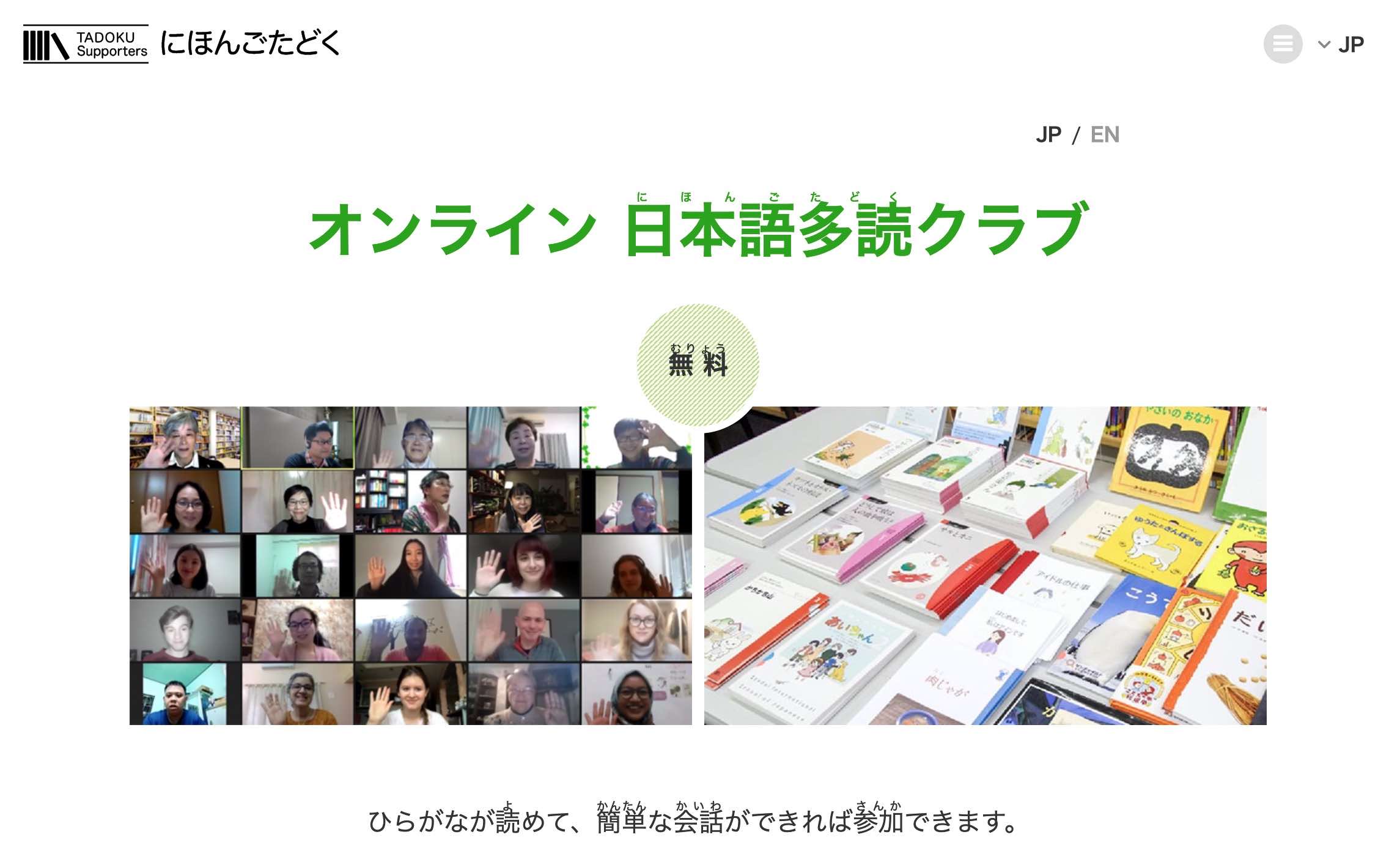
Looking to get started with reading in Japanese, but not quite sure how? There are some great options for beginners looking to add reading practice into their study regimen, but did you know one of the largest organizations promoting reading for Japanese language learners also offers a free online reading club? NPO Tadoku has championed reading as an extremely beneficial practice for Japanese language learners for years, but for students looking for just a little more help, or even just a fun and supportive environment to read in, look no further than the Online Japanese Tadoku Club! This class, usually offered bi-weekly over Zoom, offers a place for students all around the world to read alongside other students and Japanese teachers.
The class is offered entirely in Japanese, though don't worry if you're only just starting out. Teachers ask simple questions like for the students to introduce themselves, and an occasional question or two about the book you were reading. After reading one of the most beginner books from their vast free online book library together, you're given the opportunity to read more on your own, chat with some students and teachers, or explore the library a bit more. It's a fun, supportive environment for students, and a great option for learners looking to read more or just to experience something closer to a classroom setting, all for free!
Thinking in Japanese Podcast
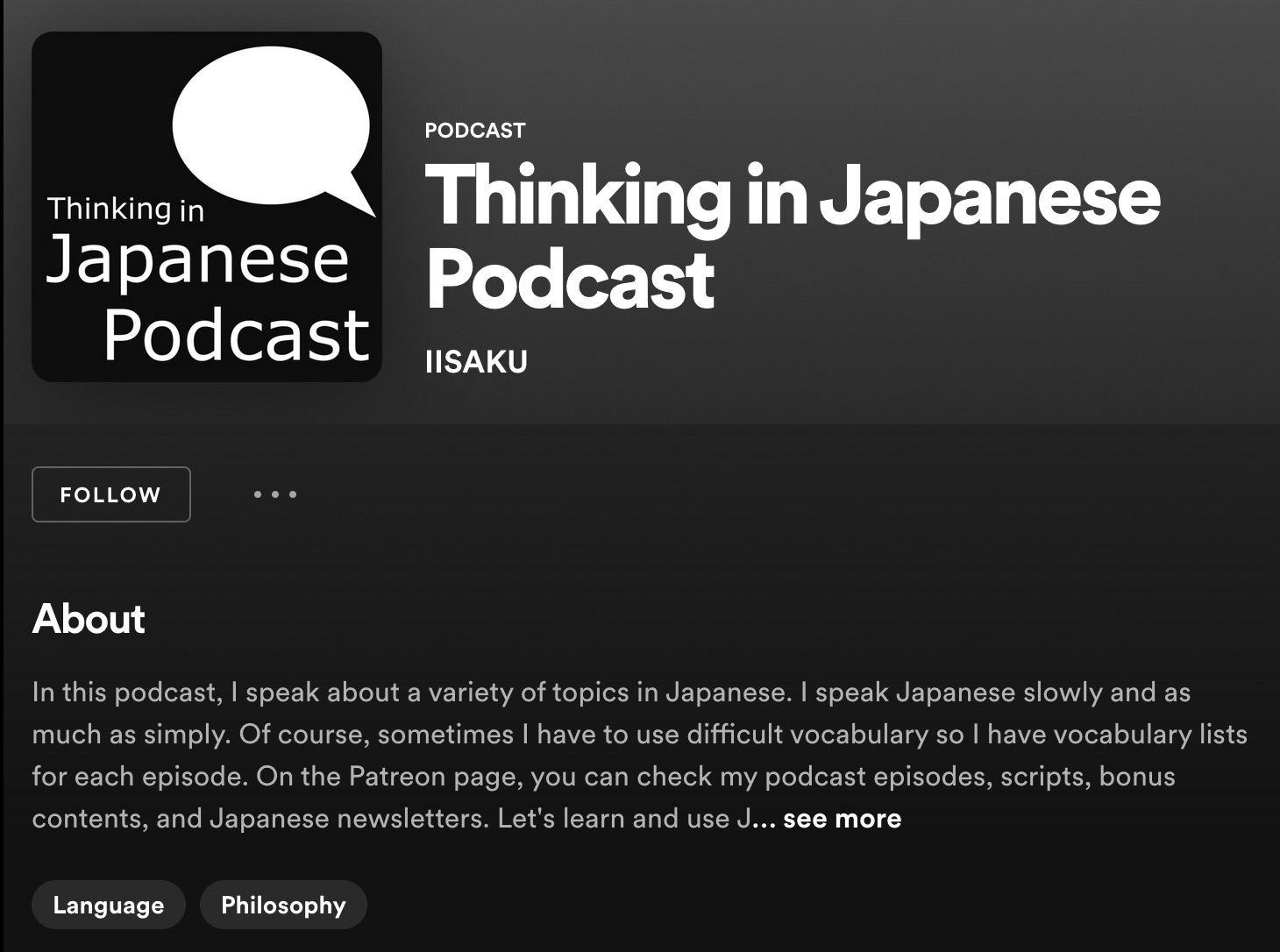
Thinking in Japanese, a podcast by Iisaku, deviates from the standard Japanese language learning podcast in a few key ways. For one, while Iisaku speaks slowly, they do so by pausing more between words and phrases, rather than slowing down their entire speech like some other podcasts do, which is more natural and makes it easier to understand. Secondly, rather than some of the generic sorts of topics discussed in other Japanese language learning podcasts, or simply chatting, Iisaku covers both topics in Japanese language learning, such as Japanese pronunciation and tips on specific types of practice, and philosophical discussions from their perspective. Because of this, it's sort of like a language learning multiplier: you're practicing by listening, and by listening, you might learn something new about Japanese practice too!
While the production quality is nothing to write home about, Iisaku also offers a patreon for $5/month to give listeners access to vocabulary lists and bonus articles. Thinking in Japanese is a unique podcast, pairing beginner-friendly pacing and vocabulary with interesting concepts meant to expand your language ability through the content in itself. For language learners who love the process of learning, Thinking in Japanese is a great option.
Sayuri Saying YouTube Channel
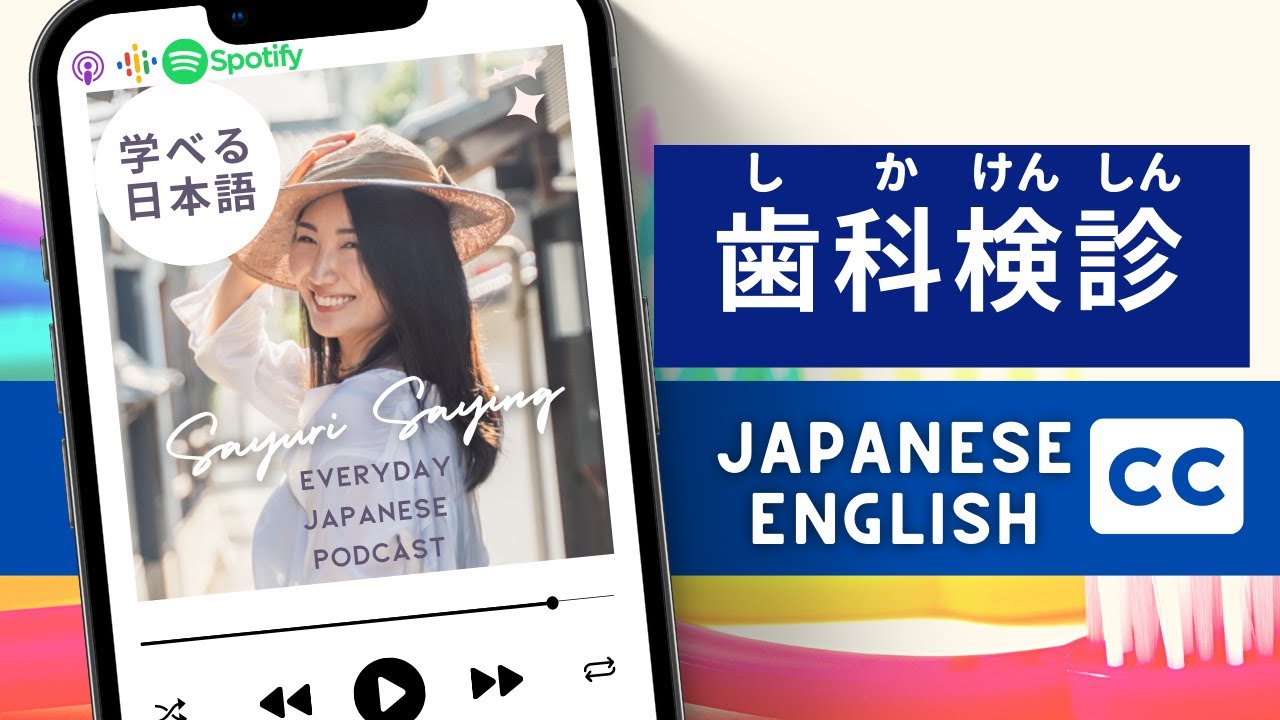
Sayuri Saying is a Japanese vlogging channel launched in 2020. Rather than directly teach grammar or vocabulary similar to a classroom setting, Sayuri focuses on simply documenting daily life situations with Japanese subtitles. Because of this, not only can language learners be sure they're getting the most natural Japanese, but Japanese that's useful in a wide range of real settings. This alone is very useful, but Sayuri takes it a step further, by making videos that are just plain interesting. Through her travel videos, and daily life, Sayuri cultivates an interest in Japanese culture and nature that I'm sure many Japanese language learners will be interested in.
For Japanese language learners interested in seeing more of Japan as a country, while still finding comprehensible study materials, you can't go wrong with Sayuri Saying. Come explore the beauty of Japan while studying the language!
うんこ入学準備ドリル こくご (うんこドリルシリーズ) / Unko Drill Series
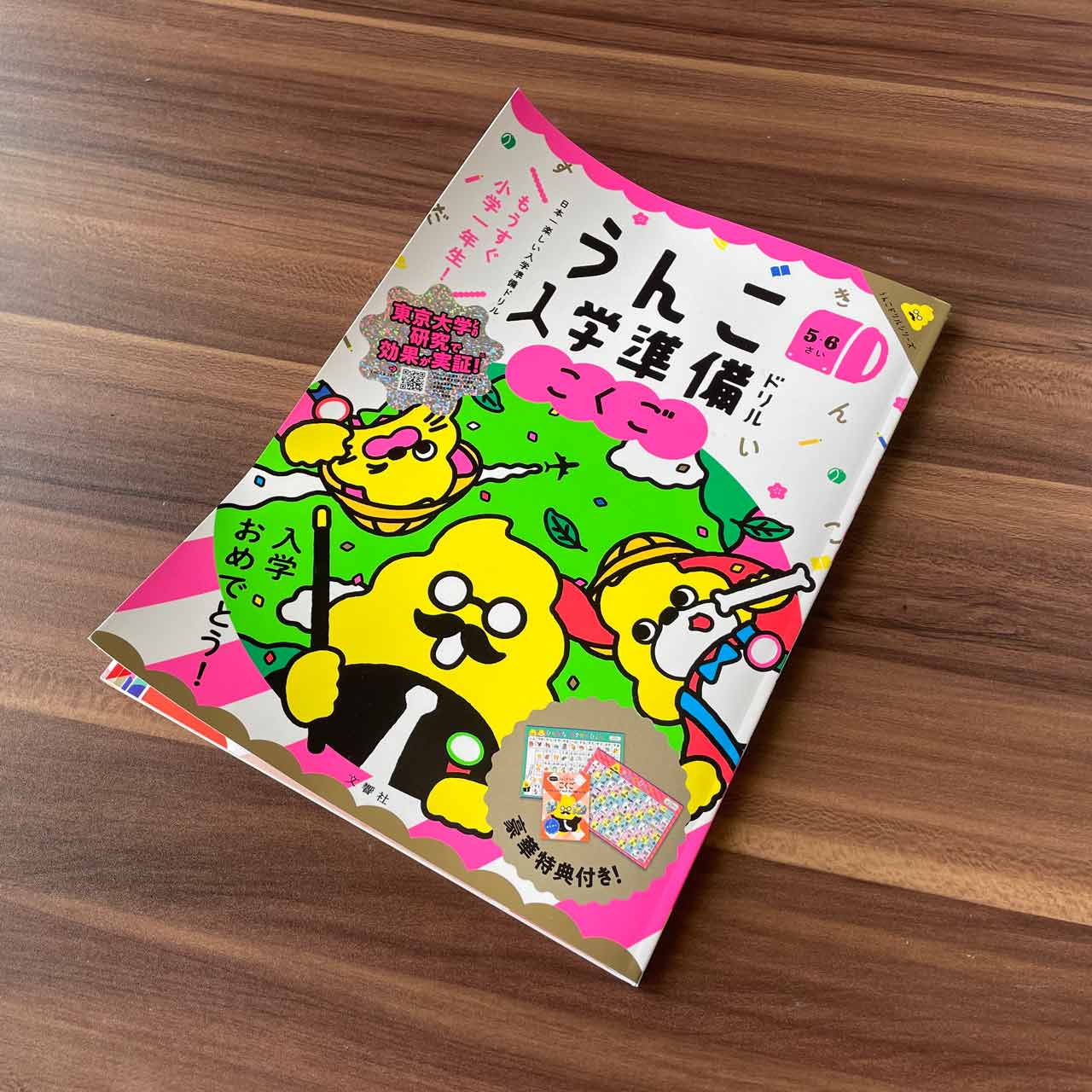
You've probably heard of the famous unko (poop) series of educational books aimed at kids in Japan. They have a whole line of books called the うんこドリルシリーズ (poop drill series) that cover kanji, math, and English for elementary school grades one to six. The book in this review is actually a first-grade prep book aimed at children ages five and six and is part of the 幼児向けうんこドリル (toddler-aimed poop drill) series. Books in this series cover ages two to six and, similar to their elementary school counterpart, contain texts for language, math, general knowledge, and crafts. The golden poop theme is explained by the author as offering a fun and humorous element to the learning material. In other words, kids respond well to poop.
This book contains 30 lessons with topics ranging from speaking and writing practice, to drilling hiragana and katakana characters. There are also many sections dedicated to vocabulary, reading, and creative writing. You can also find an introduction to kanji in lesson 28. On almost every page, there is something for the reader to write. Throughout each lesson, you will find poop-themed content in colorful spreads. This particular book also comes with fun stickers to place on certain pages as an additional activity.
And while these kinds of books are certainly made for children, there's no one to stop you from buying and using them yourself. In fact, the simple reading passages and easy writing practice make for excellent supplements for any beginner or lower-intermediate learner of Japanese. The stickers are fun too!
Japanese with Shun
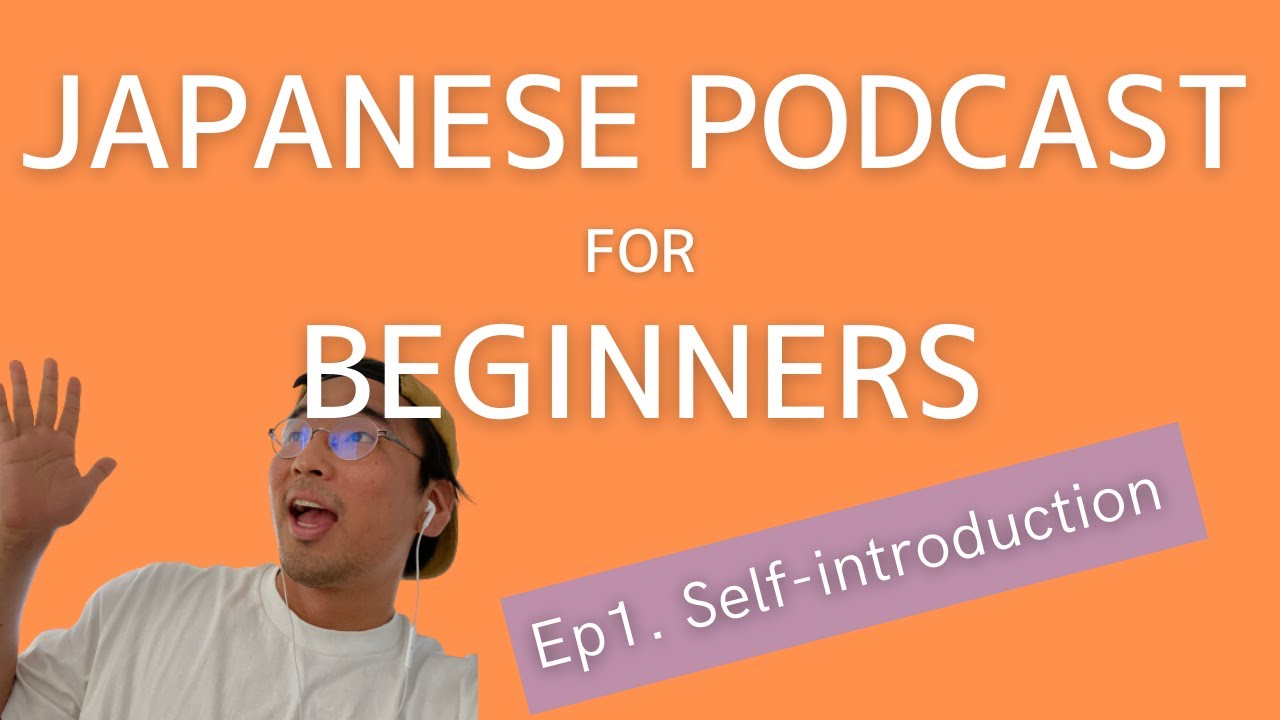
Japanese with Shun is a Japanese podcast series focused on providing listening practice that’s accessible to beginners. It accomplishes this in a few ways. For one, Shun speaks slowly and clearly, often pausing after particles to give learners a chance to think and parse what they’ve just heard. Secondly, he’s very thoughtful about constraining his speech to use mostly grammar points from the Genki 1 & 2 beginner textbook series, meaning almost any Japanese learner can enjoy.
Shun, like many other Japanese language learning podcasters, is also a Japanese teacher, offering lessons via iTalki, as well as a series of YouTube videos and other related content. For Japanese learners, this lets you know how accustomed he is to teaching.
Episodes are released once-weekly, and most clock in between 5-10 minutes. While this is fairly short, the large back-catalog means you won’t soon run out of episodes to listen to. For beginners looking for a fun, interesting, and level-suited podcast, Japanese with Shun is a great choice.
Japanese Graph
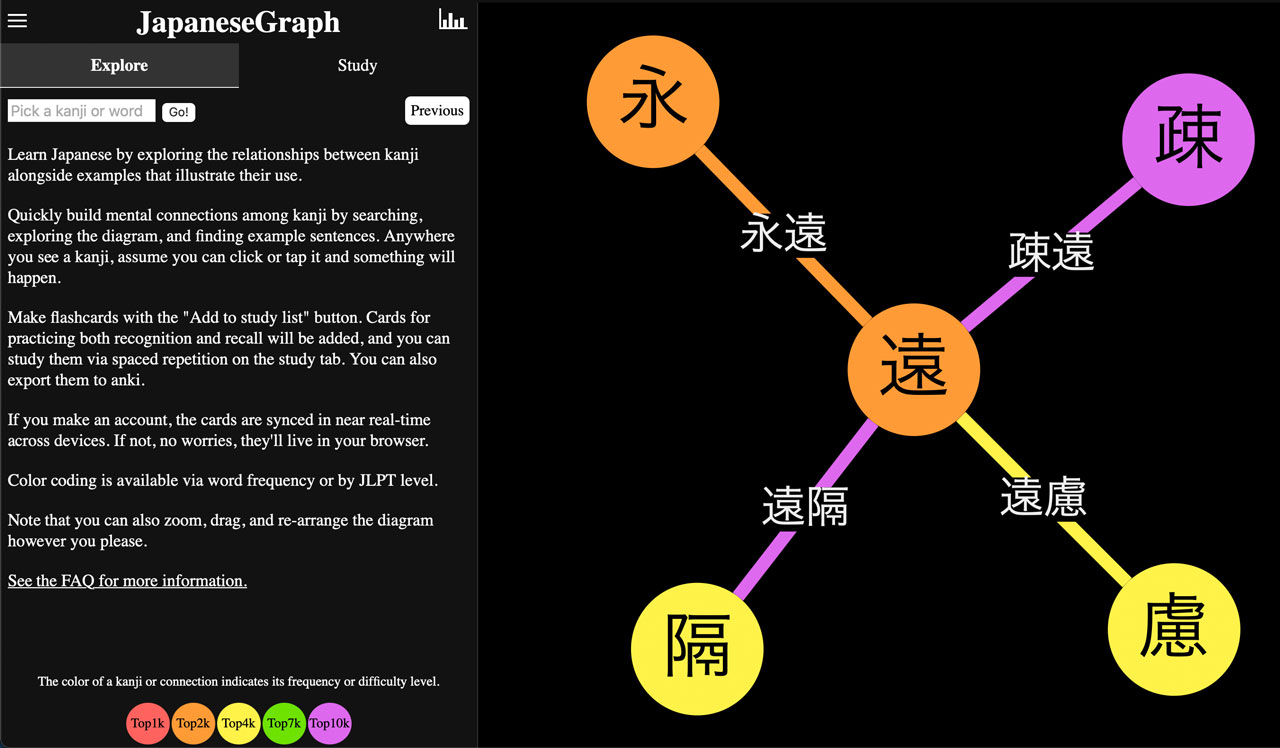
The idea behind Japanese Graph, as stated on their site is to "learn Japanese by exploring the relationships between kanji alongside examples that illustrate their use." In the "Explore" section of the site, you can run a search on a single character and the character, along with any possible combinations utilizing that character, will be diagrammed nearby in a node-network style. Character nodes are color-coded by frequency (or, optionally, by JLPT level) and can be moved around by clicking and dragging. Selecting an additional, surrounding character will reveal more relationships and so on. You can really get a large web going if you click long enough! Once a character is selected, the left panel displays a basic definition and some example sentences with words that contain the selected kanji. You also have the choice to listen to how the character is pronounced as well as add the character to your personal study list. And speaking of personal study lists, the site also has a spaced-repetition study feature that allows you to study "flashcards" of characters you've marked for study. As the site explains, it is a very basic system and all data is stored locally in your browser. (Which means no need to create an account!)
Users can additionally view a statistics page to help visualize their spaced-repetition reviews on the site as well as export any saved cards to a file format compatible with other spaced-repetition systems like Anki. The only downside to the site is how easy and quickly it is for the diagram to become cluttered and unreadable. And instead of being able to move whole nodes and their corresponding branches together, you are only able to move one node at a time. This can get pretty frustrating if you're trying to move a bunch of kanji out of the way to organize things better. All in all, it may be a worthwhile supplement for any learner interested in kanji.
教えて!ゆか先生 日本語会話表現60 / 50 Japanese Conversation Phrases with Yuka Sensei
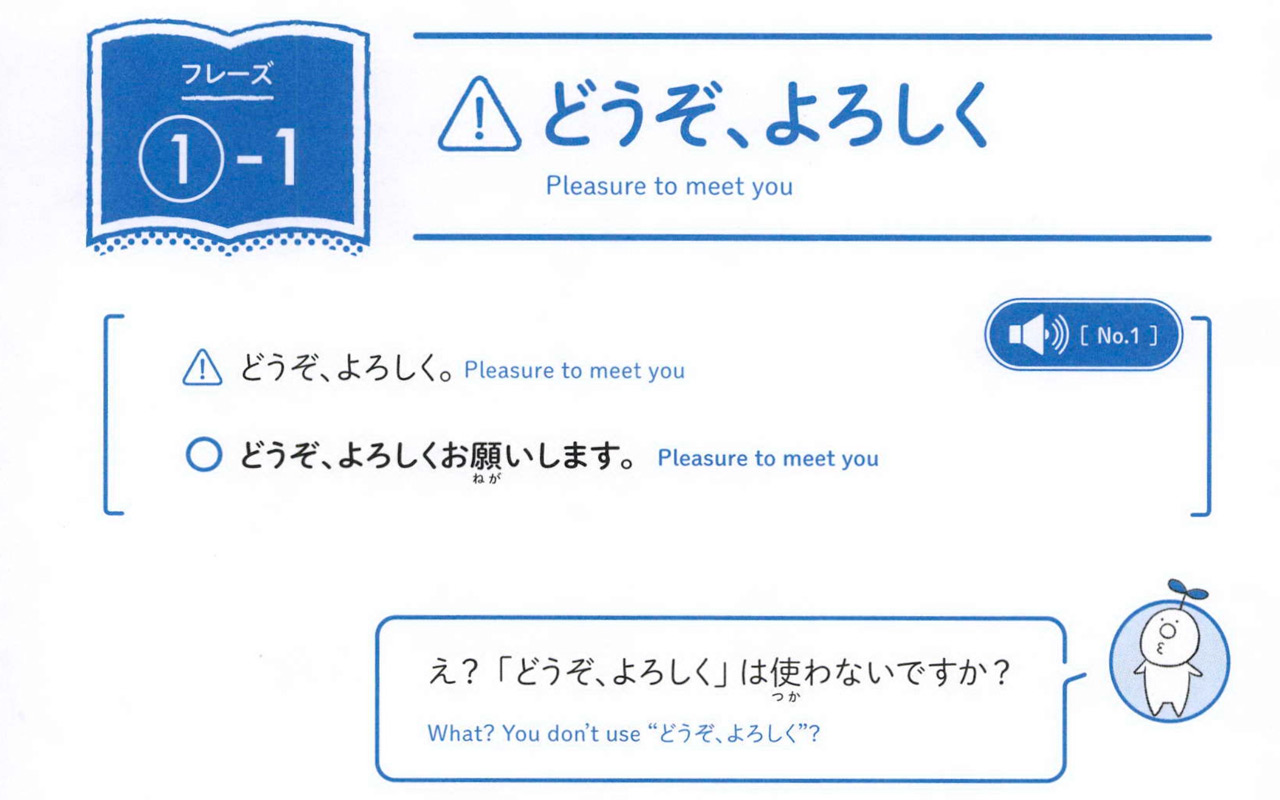
Nihongo no Mori's lively teacher, Yuka-sensei, compiled 60 Japanese phrases and their corresponding meanings, explanations, and usages into this easy-to-understand book aimed at beginner and intermediate learners of Japanese. A lot of what she has to say is related to common mistakes students make when using particular words and grammar structures. She also often addresses the way in which formal textbooks teach such patterns, providing her own advice and insight.
All 60 phrases are broken up into three chapters with individual sections dedicated to a group of related phrases. Chapter 1 is called もしかして使っちゃってる?不自然&失礼な表現 ("Could you be using these? Unnatural & Rude Expressions") and does a wonderful job of bringing to light many unnatural-sounding and even rude phrases commonly used by learners. Chapter 2, これってどういうこと?意味がややこしい言葉 ("What does this mean? Word with Complicated Meanings"), covers words with difficult or complicated meanings. It also has a section dedicated to words and phrases that may actually be used differently than described in a common textbook. And finally, common, natural-sounding Japanese words and phrases are presented in Chapter 3, entitled これができたら、会話上級者!("If you can use these, you'll be a conversation expert!").
Chapters 1 and 2 are organized very similarly. You will find a key phrase, word, or grammar pattern to be looked at, an English translation, and an explanation in a text message-like conversation format. Each section ends with a summary. Since Chapter 3 focuses mainly on presenting new words and phrases, you will see less explanations and more examples, definitions, usage hints, and similar phrases. The book also contains conversation sections that utilize previously-taught content, "mini columns" that go into detail about a related aspect of Japanese culture, and even audio recordings of the conversation portions.
This book is an excellent resource for beginner and intermediate students looking to get a more in-depth view of many common phrases, words, and grammar patterns they should already know. The breakdown of formal versus familiar is also greatly appreciated as it is something not often stressed in typical Japanese lessons.
Lazy Fluency
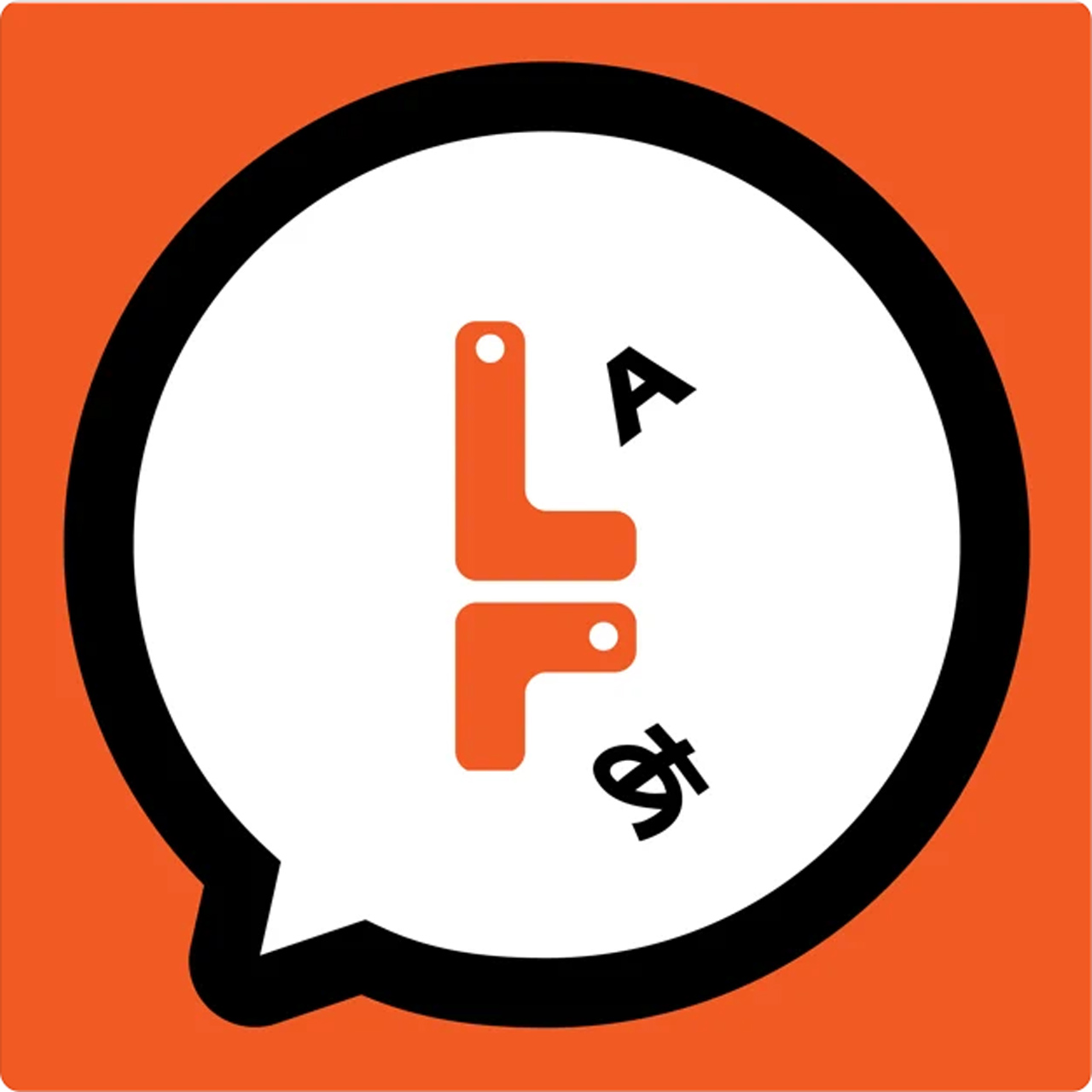
Do you find that you learn best when you’re exposed to Japanese and English content at the same time? Or, do you feel like Japanese-only content is overwhelming and your brain needs a break to process all of that input? If either of these two examples sounds familiar, this podcast may be for you. Lazy Fluency is a podcast produced by two bilingual hosts, Joey and Ayami. They switch back and forth between Japanese and English and discuss topics related to their home countries, the US and Japan.
In terms of the topics that this podcast covers, there are a wide range of talking points. Some episodes are related to current events, like Japan reopening, while others are more specific and somewhat random, such as why the banana is such a great fruit, or what to bring with you on a stranded island. The conversation between the two hosts is natural and fun. It feels like a conversation you could picture yourself having with another bilingual speaker, shifting between both languages without hesitation.
Episodes for this podcast are released weekly and are around 50 minutes in length. Because this podcast has English parts, it can be helpful for understanding context and bridging the missing gaps in information some learners may have from listening to the Japanese portion. For this reason, the ideal listener is around the intermediate level. Lazy Fluency may be a more “lazy” approach for advanced learners, but could also act as a challenge for beginners too. Happy listening!
Neko Sensei
If you’re in search of a YouTube channel for Japanese learning, Neko Sensei may be just what you’re looking for. The videos on this channel are produced and recorded by a Japanese teacher, so each one is educational and topics are throughly explained. Most of the videos surround Minna No Nihongo topics or JLPT N2 grammar points. The level of the material therefore ranges from beginner to upper intermediate. If you’re new to the language, the creator of this channel recommends learning 60-70% of hiragana first and then beginning your viewing with “Lesson 1 Video.”
Most of the videos in this channel surround grammar, vocabulary, and reading practice. For instance, one of the video series tests vocabulary knowledge by displaying a kanji or vocabulary word and then revealing the reading and English translation several seconds later. Aside from the occasional English phrase, however, most of Neko Sensei’s videos are entirely in Japanese.
Because each video is relatively short and includes colorful images that accompany the narration, they are good at holding your attention. Another creative method that Neko Sensei uses to teach viewers is through Japanese riddles that are full of puns and really make you think. Music lovers may take particular interest in the videos that break down J-Pop songs by explaining the meaning behind the lyrics. Give it a go to see what you think!
Tokyo Vice
What’s more exciting than a story involving crime reporting and the inner-workings of yakuza groups? You tell us! Tokyo Vice is a drama series based on the book by the same name. The author, Jake Adelstein, was the first American journalist for Yomiuri Shimbun. From Adelstein’s perspective, the series gives us a glimpse into organized crime in Japan and different groups, like the media and police, had a large influence on it. The cast boasts a strong list of actors including Ken Watanabe, Ansel Elgort, and others.
Because the show has both Japanese and foreign characters, the script is roughly half in Japanese and half in English. Most characters also speak both languages, where formal speech coaching helped to make the intonation of the characters come off as natural. This series is a good fit for intermediate learners as it includes both native Japanese and English throughout. This show can of course be viewed by any level of learner because there are subtitles. Whether or not you have the subtitles turned on though, you won’t want to miss this one!
That's all for this edition, but the fun is just beginning! Hopefully you found an exciting new resource to scratch that itch. If you find any other new Japanese resources that we've missed, send us an email at hello@tofugu.com or tweet at us @tofugu. We're constantly hunting for new resources to bring to you, so don't hesitate to send something our way. Happy studying!
